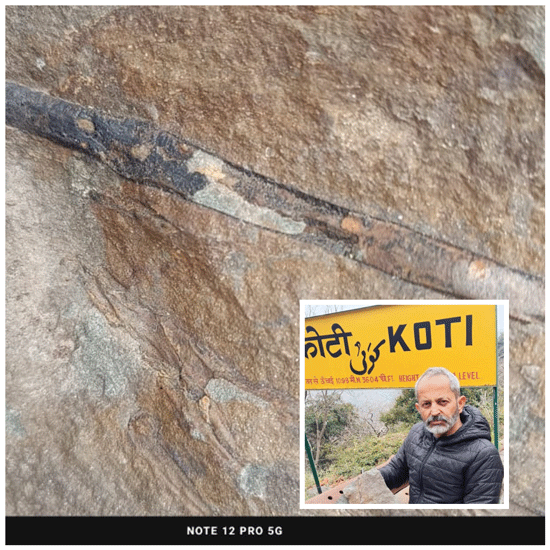Shimla, Feb 17,
A team of geologists and paleontologists has uncovered a 20-million-year-old fossil stem at Koti railway station in Solan district, Himachal Pradesh. This significant find, linked to the Kasauli Formation, offers crucial insights into the evolution of flowering plants (angiosperms) in the Indian subcontinent during the Early Miocene period.
Support Independent Journalism Complete Your Membership
Choose Your Membership
The Kasauli Formation has been a hotspot for fossil discoveries since 1864 when British geologist Medlicott first identified plant fossils in the region. This latest discovery marks the first fossil stem from the formation, enriching our understanding of ancient flora and the paleoenvironmental conditions of the area.
Revolutionizing botanical history
The fossil was discovered by Dr. Ritesh Arya, a renowned geologist and founder of the Tethys Fossil Museum. Having collected fossils since 1987, Dr. Arya has identified numerous plant fossils from the region, including trees, monocots, dicots, seeds, fruits, and insect wings, many showing equatorial affinities. His extensive research in Kasauli, Barog, Jagjit Nagar, and Kumarhatti has significantly contributed to paleobotany.
Koti railway station, known for its well-preserved sedimentary sequences, proved to be an ideal excavation site. The fossil stem showcases distinct structural features resembling modern angiosperms. According to experts, this discovery expands the known distribution and adaptation of early flowering plants in the Himalayan region.
Dr. Arya explained that the fossil’s morphology, including its branching patterns and vascular structures, suggests a close evolutionary link to early angiosperms. Preserved in sedimentary layers dating back to the Early Miocene, the plant was likely buried due to a rapid paleoflooding event, preventing decomposition and allowing its structures to remain intact.
“This discovery redefines our understanding of the region’s paleoenvironment, which was once part of the vast ecosystem surrounding the Tethys Ocean,” said Dr. Arya. “It challenges previous beliefs that key angiosperm lineages were confined to other parts of Gondwana.”
Dr. Jagmohan Singh, lead paleontologist on the project, emphasized the discovery’s importance in reconstructing ancient climatic and ecological conditions. “The Miocene era was a critical period for plant evolution. Understanding the diversity of life back then is key to unraveling the ecosystems in which early mammals and other species thrived,” he noted.
The research team plans to collaborate with the Birbal Sahni Institute of Palaeosciences for an in-depth microscopic analysis of the fossil. This study aims to uncover further details about the vascular structures and evolutionary pathways of flowering plants from this era.
Additionally, Dr. Arya and his team advocate for the preservation of the Kasauli Formation as a geoheritage site to promote geotourism and safeguard its rich fossil legacy. Further fieldwork in the Koti region is planned to unearth more plant remains and deepen our understanding of prehistoric biodiversity.
About the research team
This discovery was led by Dr. Ritesh Arya, a distinguished geologist committed to studying fossils within the Kasauli Formation. He was accompanied by Dr. Jagmohan Singh, a retired senior manager from ONGC. Their interdisciplinary research efforts continue to shape the understanding of ancient ecosystems and plant evolution.






